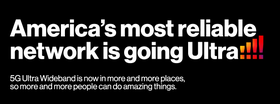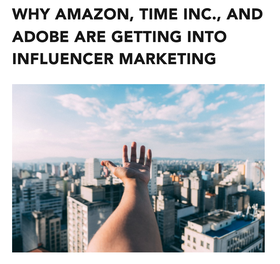Why AdRoll is Your Ideal Programmatic DSP
AdRoll helps you run full-funnel, multi-channel ad campaigns. Learn how our programmatic DSP enables better ad campaigns that convert customers.
Read More
Can you believe it’s 2022? Just like that, we’ve embarked on a new year — one of the most important times for brands and marketers. You’re busy finalizing annual budgets, combing through last year’s data for critical insights, and mapping out creative campaigns.
But to reach ultimate success, it’s essential to have a clear picture of what you hope to achieve before diving into the planning, strategizing, and resourcing stages. That said, we’re here to help you stay ahead of the curve: Here are five marketing trends in 2022 you’ll want to keep on your radar.
With the global rollout of 5G services underway, expect to see commercials with claims like, “Imagine downloading an entire movie in seconds, not hours.” In other words, those laggy Zoom calls will soon be a thing of the past.
With 5G networks’ super-fast data speeds and near-instant connectivity, you can say goodbye to all of your “Hello, hello, can you hear me?” questions.

5G will improve every digital experience, from streaming music to watching live sports.
But what does the advent of 5G mean for the marketing industry? One of the biggest benefits will be the widespread adoption of tech-driven initiatives like 4K video ads, VR and AR product testing, and immersive virtual live events.
With 5G, it will become infinitely easier to transmit heavy amounts of data, leading to higher-quality, more interactive digital experiences. Say goodbye once and for all to buffering, pixelated videos, all-day downloads, and slow site load times. What’s more, it’ll also provide more accurate data that marketers can use to personalize the shopper experience.
Though websites will load faster across the board, take the time to optimize your site — remove unnecessary apps and dead links and reduce image sizes.
Brush up on your knowledge of AR and VR for marketing with this guide.
More and more new users continue to sign up for Facebook, Instagram, and WhatsApp. With billions of dollars invested in these social media platforms, Facebook is here to stay, even as it's mired by controversies and legal challenges.
Though you may be tempted to jump ship from this advertising behemoth, know that Facebook is still one of the top platforms in the world (though TikTok isn’t far behind).
And with that comes Facebook’s Metaverse, a digital world championing interconnected virtual and augmented experiences. Although it’s unclear whether or not Meta’s promotional claims will come to fruition this year, one thing is clear: A new future of the web is coming.
iOS 14 heavily impacted Facebook. If you’re still using the same targeting, bidding, and creative Facebook ad strategies, it’s time for an update. Here’s a guide to get started.
It’s hard to stand out with Facebook ads — but it doesn’t mean it’s impossible. Make sure you’re launching A+ campaigns using these tips.
When was the last time you revisited your Facebook audience targeting? Here are some ways to segment your audiences and improve your return on investment (ROI).
Influencer marketing dominated the ecommerce and business-to-consumer (B2C) space in 2021. The strategy even trickled into the business-to-business (B2B) landscape, too. Can you believe that brands from Adobe to Amazon are dabbling with influencer marketing?

These headlines point to one thing: Stop sleeping on influencer marketing as a tactic.
In recent years, influencers have transformed into household names — and there’s no sign of that changing. Don’t miss out on this major driver of social proof in 2022:
To get started with influencer marketing with little risk, consider launching an affiliate program.
Use this checklist to find the best influencers for your brand.
Determine the payment structure for your influencer program. It can be tricky, so use this guide.
Brainstorm fresh influencer content ideas. Need help? We’ve got you covered here.
Anyone in marketing knows their job goes far beyond traditional advertising. It’s their responsibility to entertain, inform, and lead shoppers — all at the same time. Plus, if you’re a solo marketer at a small brand, you’re likely designing creative, writing copy, optimizing for SEO, and measuring analytics, too.
Rather than asking, “How can I persuade a shopper to buy this product?” you should explore questions such as, “What are some ways I can educate someone on this topic?” or “How can I use entertainment to make a shopper want this product?”
With the right tools and partners, a small ecommerce brand can stay relevant against larger competitors with deeper pockets. We recommend:
Spending time every day leveling up your skills and knowledge. There are a ton of fantastic resources out there, from the Social Media Examiner podcast to the AdRoll Marketing Resource Library, where you’ll find the latest trends, best practices, and industry news.
Outsourcing time-consuming tasks, such as content marketing or creative development, to an external agency. Here’s a guide on how to choose the perfect partner.
Omnichannel retail is the future of how we buy and sell. Essentially, omnichannel marketing involves connecting all of your online and offline touchpoints in a way that provides shoppers with a seamless experience.
While we highly recommend brands transition from a multi-channel model to an omnichannel approach, the truth is it requires time and resources that most companies don’t have.
There’s good news, though. With an omnichannel MarTech platform (think of AdRoll), you can quickly implement automations and holistic data analytics. From retargeting ads to UTM tracking, our solutions allow you to focus on other vital parts of your business while still achieving growth.
There’s an obvious answer to the question of how you can get ahead of the omnichannel marketing trend in 2022 (plus all the other trends mentioned in this post) — get started with AdRoll now.
Last updated on January 13th, 2022.